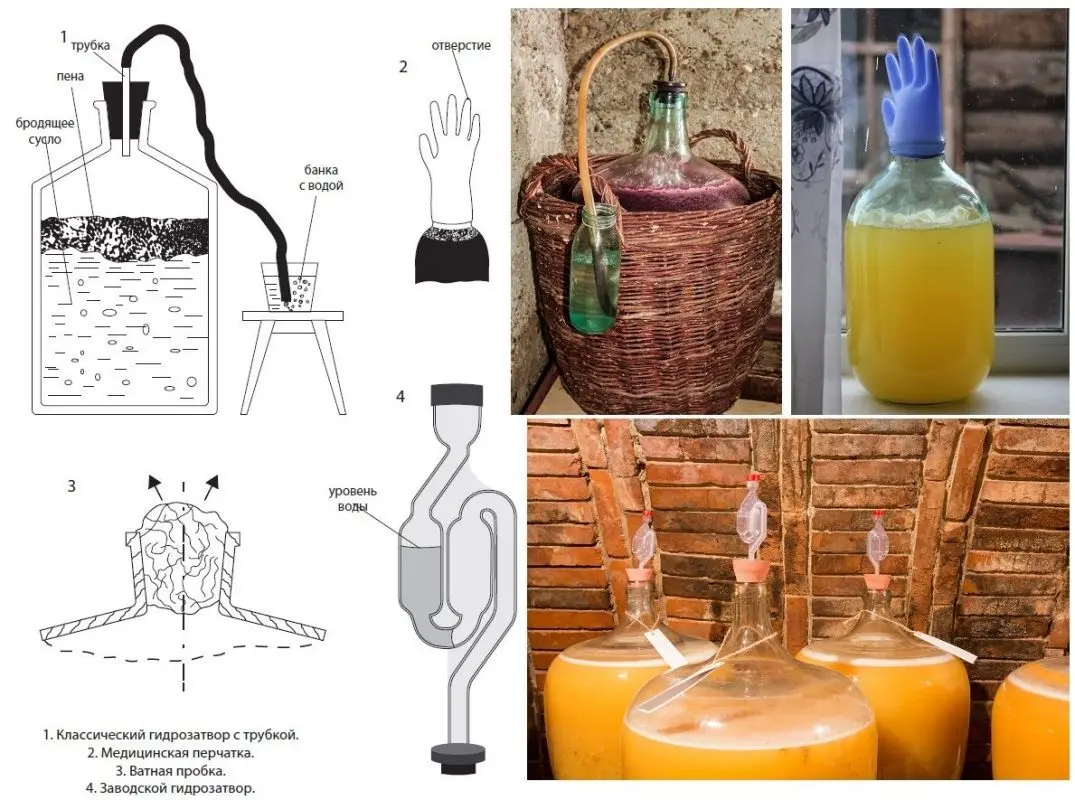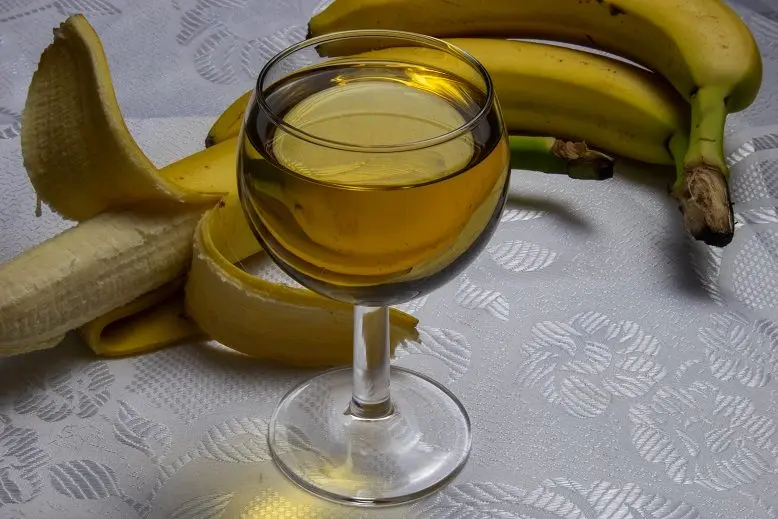Homemade banana wine is a fragrant honey-colored drink with light notes of raw materials, the taste is difficult to compare with anything else. The cooking technology is somewhat different from traditional winemaking, since the fruits do not give juice and other substances well, but even beginners can do the recipe.
Wine requires any ripe bananas. Suitable even with a blackened peel, so long as the flesh is not rotten and moldy. In order not to infect the wort with pathogenic microorganisms, all used containers and tools should be sterilized with boiling water, then wiped dry with a clean cloth.
Ingredients:
- bananas – 5 kg;
- water – 10 liters;
- sugar – 2 kg;
- citric acid – 7 teaspoons (35 grams);
- unwashed raisins (any fresh berries) – 100 grams or wine yeast per 15 liters of must.
Citric acid is needed to increase acidity and break down sugar into fructose with glucose, which promotes fermentation, improves taste, increases shelf life and prevents certain wine diseases. To activate the fermentation, wine yeast is required (other types are not suitable) or sourdough from raisins (fresh berries can be used).
banana wine recipe
1. If there is no wine yeast, 3-5 days before processing bananas, make a starter from unwashed raisins (raspberries, currants, cherries, etc.): pour raisins or berries into a jar, add 25 grams of sugar and 250 ml of unboiled water , mix, cover with gauze, put in a dark place at room temperature.
After 2-3 days, the sourdough will be ready – foam will appear, a slight sour smell and a hiss will be heard.
2. Peel bananas. Grind the pulp with your hands, a wooden rolling pin or a meat grinder to a puree state.
Making wine with banana skins is undesirable because the skins are treated with toxic chemicals to increase shelf life.
3. Mix in an enamel saucepan 5 liters of water (half), 1 kg of sugar (half), banana puree and citric acid. Bring the mixture to a homogeneous consistency.
4. Heat the wort to 55-58°C, maintain the specified temperature range for 60 minutes, heating the pot over low heat. Stir occasionally so that the gruel remains homogeneous, and there are no lumps at the bottom.
It is very important not to let the temperature rise above 60°C, otherwise the enzymes will break down and the release of fructose from bananas and sugar will stop. As a result, part of the raw materials will be used in vain.
5. Cool down the wort to 25-27°C. Add remaining water and leaven (along with raisins) or wine yeast. Mix. Cover with gauze, leave for 4 days in a dark place at room temperature. Stir once every 12 hours with a clean hand or wooden stick. After 3-8 hours, foam and the smell of fermentation should appear on the surface.
6. After 4 days, strain the wort through 4-5 layers of gauze, squeeze the cake well, taking all the liquid. Squeezes are no longer needed. Add 500 grams of sugar to the liquid part, mix.
7. Pour the resulting banana juice into a fermentation tank. Fill up to a maximum of 60-65% of the volume. Install a water seal of any design on the neck (you can pull on and fasten a medical glove with a small hole in one of the fingers).
Attention! During the fermentation of banana wine, a lot of foam appears for the first 6-10 days, so I advise you to fill the container halfway or even less.
8. Transfer the container to a dark place (or cover) with a stable temperature of 18-27°C and leave until the end of fermentation.

9. After 5 days from the date of installation of the water seal, add the remaining sugar (500 grams). To do this, pour 250 ml of wort through a tube into a separate container, dilute sugar in it, pour the resulting syrup back into the fermentation container and close it with a water seal.
10. Depending on yeast activity and temperature, homemade banana wine will ferment for 30-60 days. The end of fermentation is indicated by the absence of gas from the water seal (the glove was blown off) and a layer of sediment. It is necessary to drain the young wine through a straw, without touching the sediment at the bottom, into another container.
If fermentation does not stop after 50 days from the start of preparation, drain the wine from the sediment and let it ferment at the same temperature, otherwise bitterness may appear.
11. Taste the drink. If desired, sweeten with sugar (to taste) or fix with vodka (alcohol) in an amount of 2-15% of the volume of the drained wine. Fixing aids storage but makes the flavor somewhat harsh.
12. Pour the wine into storage containers. To minimize contact with oxygen, it is desirable to fill to the top. Close hermetically. If sugar was added at the previous stage, I recommend keeping it under a water seal for the first 7-10 days in case of repeated fermentation.
13. Transfer the banana wine to a refrigerator or cellar with a temperature of 5-16°C. Leave for at least 4 months (preferably 7-8). Aging greatly improves the taste.
14. Every 15-20 days (then less often) as a sediment appears in a layer of 3-5 cm, filter the wine by pouring it through a tube into another container.
15. When no sediment appears, the banana homemade wine is ready. The drink can be poured into bottles and closed with corks. Shelf life – up to 3 years. Fortress – 9-12%.










